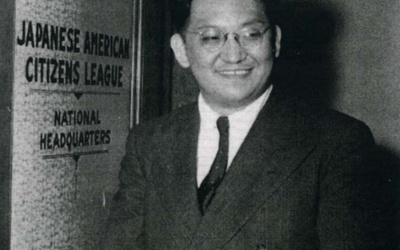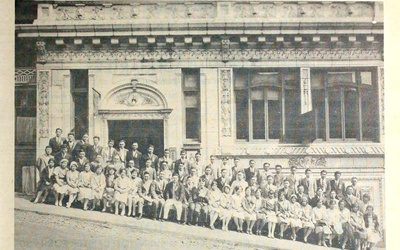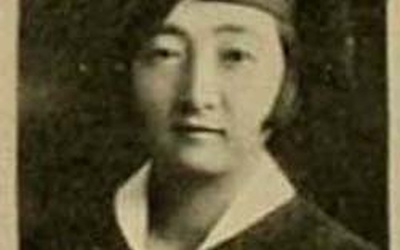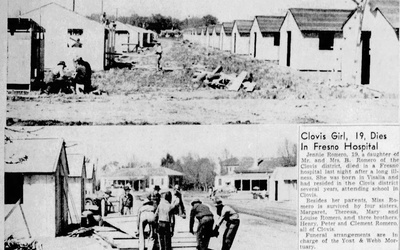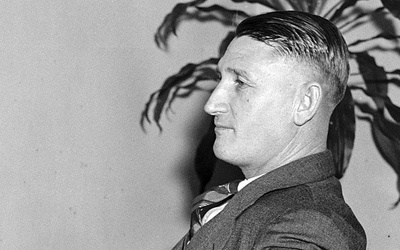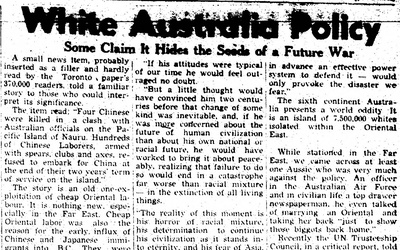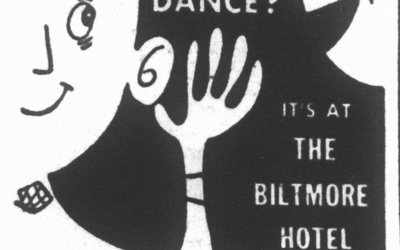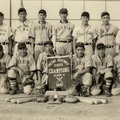
Jonathan van Harmelen
@jonathanJonathan van Harmelen estudia actualmente un doctorado (Ph.D) en historia en la Universidad de California en Santa Cruz, con especialización en la historia del encarcelamiento japonés-americano. Es licenciado en historia e idioma francés por la Universidad Pomona y ha completado una maestría en humanidades en la Universidad de Georgetown. Entre el 2015 y el 2018, Jonathan había trabajado para el Museo Nacional de Historia Americana como pasante e investigador. Puede ser contactado al email jvanharm@ucsc.edu.
Última actualización en febrero de 2020
Historias de Este Autor
Las elecciones de 1944: el ocaso de los demagogos (segunda parte)
8 de abril de 2024 • Jonathan van Harmelen
Leer Parte 1 >> Para los estadounidenses de origen japonés que observaron las elecciones, el uso de hostigamientos raciales provocó ira y, en ocasiones, una respuesta de comedia oscura. Como explica Natasha Varner de Densho en su artículo de 2016 sobre el voto ausente en el campo, los reclusos japoneses-estadounidenses todavía enfrentaban varios obstáculos burocráticos de las juntas electorales dos años después de las elecciones de 1942 que hicieron que votar desde el campo fuera difícil, si no imposible. Larry …
Las elecciones de 1944: El ocaso de los demagogos—Parte 1
7 de abril de 2024 • Jonathan van Harmelen
Anteriormente, escribí un artículo para Discover Nikkei sobre cómo el encarcelamiento de los estadounidenses de origen japonés afectó las elecciones de 1942 y cómo los estadounidenses de origen japonés lograron participar en las elecciones . A pesar de los traumáticos acontecimientos de ser enviado al campo y los esfuerzos de los políticos racistas para impedir que los estadounidenses de origen japonés votaran, muchos estadounidenses de origen japonés todavía participaron en las elecciones mediante el voto ausente. Para algunos nisei, las …
Suma Sugi Yokotake - La mujer que se convirtió en la primera cabildera japonesa-estadounidense - Parte 2
8 de marzo de 2024 • Jonathan van Harmelen
Leer Parte 1 >> A su regreso a Los Ángeles, la JACL de Los Ángeles y el Rafu Shimpo celebraron los exitosos esfuerzos de cabildeo de Sugi. Los periódicos destacaron especialmente el hecho de que Hiram Johnson, un destacado político antijaponés, votó a favor del proyecto de ley. El cabildeo de Sugi sirvió como una prueba valiosa para futuros esfuerzos de cabildeo. El Rafu Shimpo encargó a Sugi que escribiera una columna sobre sus experiencias en Washington. El líder de …
Suma Sugi Yokotake - La mujer que se convirtió en la primera cabildera japonesa-estadounidense - Parte 1
7 de marzo de 2024 • Jonathan van Harmelen
Uno de los mayores logros de la Liga de Ciudadanos Japonés-Americanos ha sido su éxito al presionar al Congreso para que promulgara legislación que apoyara a los japoneses-americanos y otros grupos asiático-americanos. Mucho antes del movimiento de reparación de la década de 1980, la JACL reconoció la importancia de la acción del Congreso como medio para crear conciencia sobre los problemas que afectan a los estadounidenses de origen japonés y desafiar las leyes injustas que los discriminaban a ellos y …
La casa en la que vivo: Frank Sinatra y los japoneses americanos
31 de enero de 2024 • Jonathan van Harmelen
La investigación de archivos es a menudo como un juego de azar; O obtienes cajas de archivos que contienen información valiosa para tu proyecto o una pila de archivos polvorientos que te hacen preguntarte si desperdiciaste un día de trabajo. Y, a veces, te encuentras con una historia que no esperabas encontrar pero que hace que la experiencia sea aún más gratificante. Tal es el caso de mi investigación sobre la Autoridad de Reubicación de Guerra y las celebridades. De …
Un circo en Tulare: La historia del congresista Alfred Elliott y el encarcelamiento de estadounidenses de origen japonés - Parte 2
9 de enero de 2024 • Jonathan van Harmelen
Leer Parte 1 >> La siguiente tarea en la agenda política de Elliott fue extender la frontera de la zona de exclusión a todas las partes orientales de Tulare y el condado de Kern. Inicialmente, el Comando de Defensa Occidental anunció el 2 de marzo de 1942 que todos los estadounidenses de origen japonés que vivían al oeste de la autopista 99 en la Zona de Exclusión 1 debían presentarse para ser encarcelados. Esto, y la decisión del ejército de …
Un circo en Tulare: La historia del congresista Alfred Elliott y el encarcelamiento de estadounidenses de origen japonés - Parte 1
8 de enero de 2024 • Jonathan van Harmelen
Como parte de mi investigación de tesis en curso sobre el Congreso y el encarcelamiento de estadounidenses de origen japonés en tiempos de guerra, he encontrado viñetas en varios archivos que ilustran el papel influyente desempeñado por los miembros del Congreso. Si bien quizás las acciones más visibles tomadas por el Congreso con respecto a los estadounidenses de origen japonés fueron la celebración de audiencias públicas (a saber, los Comités Tolan, Dies y Chandler) y la aprobación de leyes (como …
Deriva continental: cómo el sentimiento antijaponés en Australia afectó a las comunidades nikkei en Estados Unidos y Canadá
20 de noviembre de 2023 • Jonathan van Harmelen
Durante la Segunda Guerra Mundial, las comunidades japonesas de la costa del Pacífico y otros lugares fueron sometidas a desplazamiento, internamiento o encarcelamiento. Si bien el caso de la costa oeste de Estados Unidos es el más conocido, varias naciones desarrollaron apresuradamente sus propias políticas de encarcelamiento basadas en el supuesto de que las comunidades japonesas, independientemente de su estatus de ciudadanía o lealtad al país, apoyaban a Japón. En la mayoría de los casos, el trato punitivo de las …
Una nueva mirada a los veteranos nisei: la lucha de Lawrence Matsuda y Matt Sasaki por Estados Unidos
8 de noviembre de 2023 • Jonathan van Harmelen
En los últimos años, Chin Music Press ha producido una gran serie de novelas gráficas sobre la experiencia japonesa-estadounidense en tiempos de guerra. Estos incluyen la colaboración de Frank Abe y Tamiko Nimura con los ilustradores Matt Sasaki y Ross Ishikawa en We Hereby Refuse , y la asociación de Kiku Hughes y Ken Mochizuki en Aquellos que nos ayudaron . Ahora Sasaki ha “regresado”, esta vez trabajando con el educador y activista Lawrence Matsuda en una versión revisada de …
Manteniendo el ritmo: la historia del legendario baterista Paul Togawa
31 de octubre de 2023 • Jonathan van Harmelen
Como parte de mi serie actual sobre músicos de jazz japoneses-estadounidenses, abordaré ahora la fascinante historia de Paul Togawa. Aunque la mayoría de los músicos anteriores que he presentado eran todos Nisei nacidos en la década de 1920, Togawa fue una rara excepción como Nisei de posguerra que desarrolló una carrera exitosa a una edad temprana. Como baterista de jazz que dirigió sus propias orquestas y grabó varios discos (uno entre los pocos estadounidenses de origen japonés, junto con Tak …

